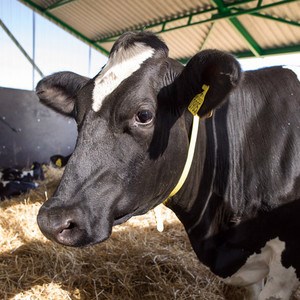Mastitis or udder inflammation is a common production disease in dairy herds, causing compromised animal welfare and entails economic losses for the farmer. Now, a new article on different udder inflammation indicators provide insight into the differences in dynamics of udder inflammation indicators between cows that recover and those that do not recover after detection of an initial inflammation.
Sensors can detect cows with mastitis, but the scientific data on how these cows should be handled during a mastitis episode is lacking. The big challenge is to give the cow the right treatment and at the same time minimize the need for antibiotics and the risk of antibiotic resistance while maximizing animal welfare and farm performance.
– Nowadays, dairy farmers can have access to potentially large amounts of data due to the increased adoption of sensors on farm. To obtain an overview of all data and to make decisions based on it can be difficult, explains John Bonestroo.
In automatic milking systems sensors can measure cow behavior and milk composition at every milking. In a new study, previously collected data of milk composition from observational studies was gathered and was used to analyze the progression of the disease through the eyes of the sensors.
– We wanted to gain insight into the differences in dynamics of udder inflammation indicators between cows that recover and those that do not recover after detection of an initial inflammation, explains John Bonestroo.
Farmers can evaluate udder health with the help of sensor data
The data originated from 15 herds in automatic milking systems in six countries. A threshold was found after three to four weeks after initial inflammation. A typical case was most likely to recover in three to four weeks. Practically, farmers could use the data from this time point to reevaluate the udder health status of the cow and effects of any interventions.
– This new knowledge can be used to build new groundwork for the definitions of chronic and nonchronic udder inflammation cases using daily available sensor data, concludes John.

